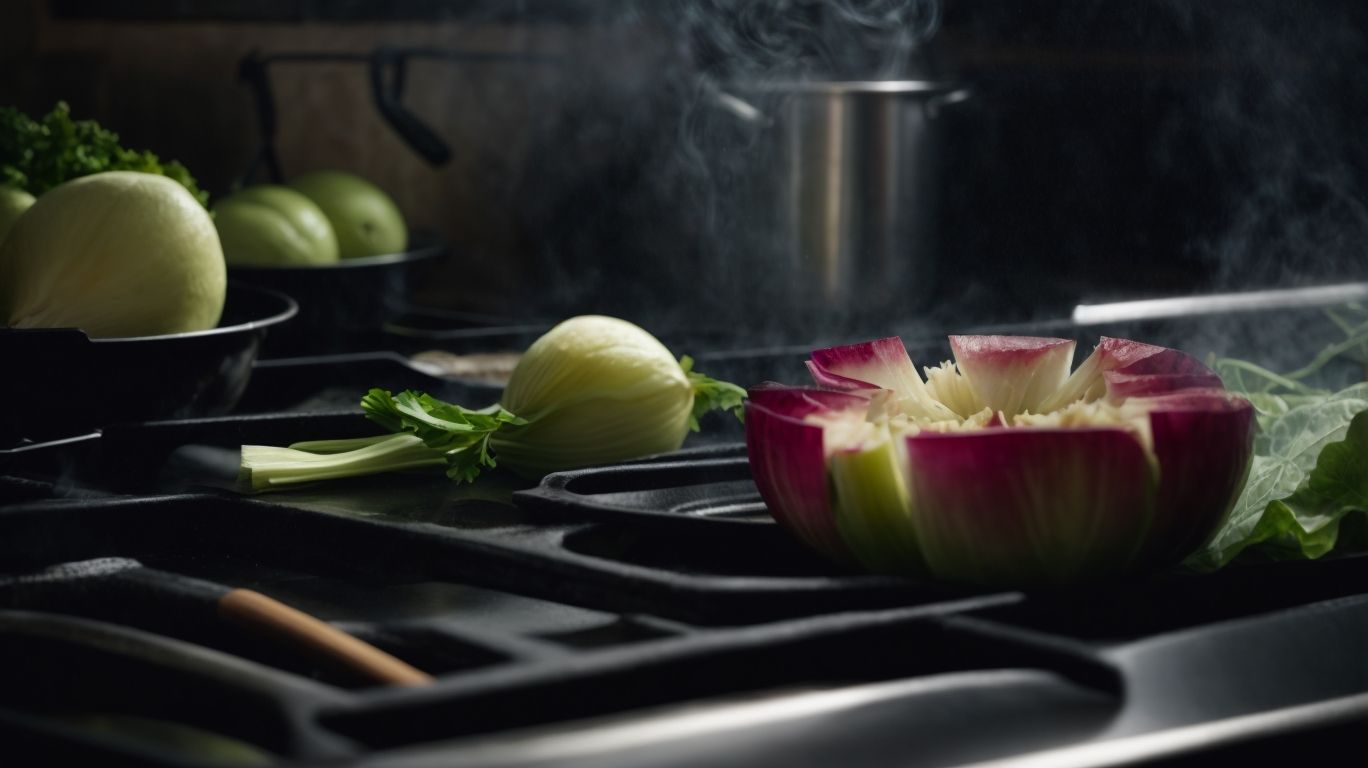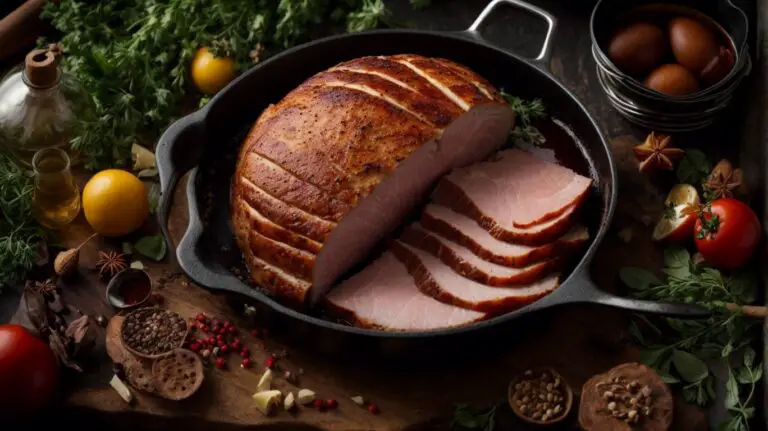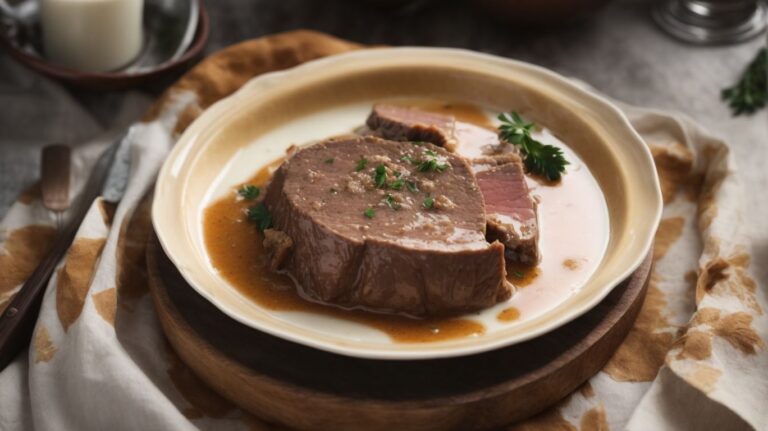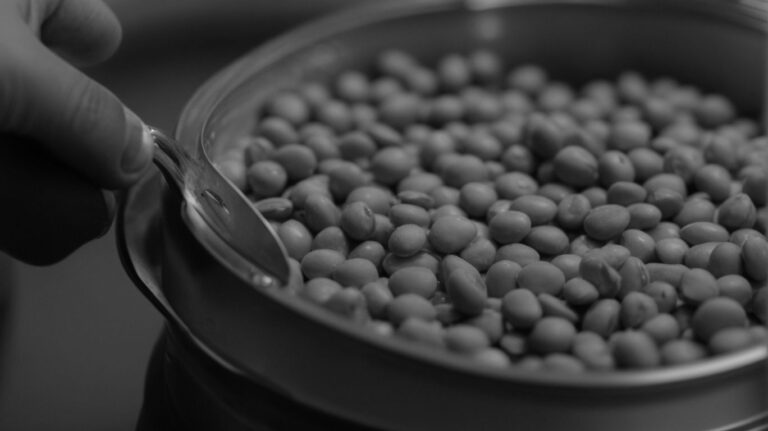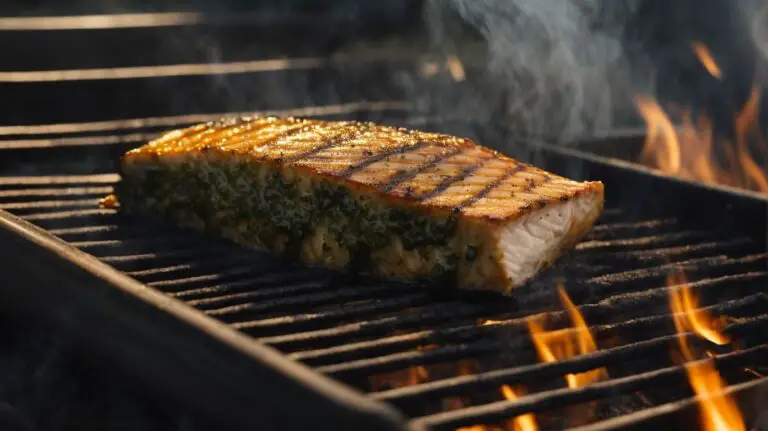How to Cook Kohlrabi on Stove?
Curious about kohlrabi and its health benefits? Look no further!
We will explore everything you need to know about this nutrient-packed vegetable. From its high nutritional value to potential anti-cancer properties, we will cover all the reasons why you should add kohlrabi to your diet.
If you’re wondering how to choose, store, and prepare kohlrabi, we’ve got you covered with helpful tips and delicious recipes.
Discover the different ways to cook kohlrabi on the stove and get ready to elevate your culinary skills with this versatile ingredient!
Key Takeaways:
What is Kohlrabi?
Kohlrabi, a versatile vegetable with a unique taste and texture, is a member of the cabbage family.
Originating in Europe, kohlrabi is known for its bulbous shape and thick skin that can be purple, green, or white. Its flavor is often described as a mix between cabbage and broccoli with a hint of sweetness.
This vegetable can be enjoyed raw in salads for a crunchy bite or cooked in various dishes like stir-fries, soups, and gratins, adding a delicate yet distinctive flavor to the meal. Kohlrabi can also be roasted, steamed, or pickled, showcasing its versatility in cooking preparations.
What Are the Health Benefits of Kohlrabi?
Kohlrabi offers a range of health benefits, making it a nutritious addition to any diet.
Rich in vitamin C and fiber, kohlrabi helps boost the immune system and supports digestive health. It also contains antioxidants like isothiocyanates that have been linked to potential anti-cancer properties. The high content of potassium in kohlrabi contributes to regulating blood pressure and heart health. Not to mention, its cholesterol-lowering effects can aid in maintaining a healthy cardiovascular system.
High in Nutrients
Kohlrabi is a powerhouse of essential nutrients such as vitamins, minerals, and antioxidants, contributing to overall well-being.
One cup of raw kohlrabi contains a significant amount of vitamin C, offering around 84mg, which is approximately 93% of the recommended daily intake. Along with vitamin C, kohlrabi is a good source of vitamin B6, vitamin K, and folate. These vitamins play key roles in supporting the immune system, bone health, and red blood cell formation. Kohlrabi provides essential minerals such as potassium, manganese, and copper, which are vital for various bodily functions.
Good for Digestive Health
The fiber content in kohlrabi promotes healthy digestion and helps maintain a well-functioning digestive system.
Kohlrabi, being rich in fiber, aids in regulating bowel movements and preventing digestive issues such as constipation. It acts as a prebiotic, fostering the growth of beneficial gut bacteria that contribute to overall digestive health. The enzymes present in kohlrabi support the breakdown of food, easing the digestive process.
This versatile vegetable also contains water, which assists in softening stool and preventing discomfort. With its low-calorie and high-nutrient profile, kohlrabi makes a valuable addition to a diet aimed at promoting digestive wellness.
May Help Lower Cholesterol
Studies suggest that kohlrabi consumption may aid in lowering cholesterol levels, promoting heart health.
Kohlrabi, a cruciferous vegetable rich in fiber and antioxidants, plays a crucial role in cholesterol management. The fiber content in kohlrabi helps reduce the absorption of cholesterol in the gut, thereby lowering overall levels in the bloodstream. Kohlrabi is a good source of phytochemicals that have been linked to improved heart health. Research has shown that regular consumption of kohlrabi can help decrease LDL (bad) cholesterol levels while increasing HDL (good) cholesterol, resulting in a healthier cardiovascular system.
May Have Anti-Cancer Properties
Research indicates that kohlrabi contains compounds with potential anti-cancer properties, offering protective effects against certain types of cancer.
One of the key compounds found in kohlrabi is glucosinolates, which have shown promising effects in inhibiting the growth of cancer cells.
Studies have revealed that the high content of vitamin C in kohlrabi acts as a potent antioxidant, reducing oxidative stress and inflammation that are linked to cancer development.
The presence of indole-3-carbinol in kohlrabi has been associated with the ability to alter estrogen metabolism, potentially reducing the risk of hormone-related cancers.
How to Choose and Prepare Kohlrabi?
Selecting and preparing kohlrabi is simple and rewarding, allowing you to enjoy its unique flavor and texture.
When choosing kohlrabi, look for bulbs that are firm, smooth, and free of blemishes or soft spots. The smaller bulbs tend to be more tender and sweeter, ideal for eating raw in salads. Larger bulbs can be used for cooking, lending a robust flavor to dishes.
To store kohlrabi, remove the leaves, wrap the bulbs in a paper towel, and place them in a perforated bag in the fridge. This helps maintain its freshness for up to 2 weeks.
For cooking, kohlrabi can be steamed, roasted, stir-fried, or grated into slaws. Its mild cabbage-like taste pairs well with garlic, lemon, or herbs like dill and thyme, enhancing its natural flavor.
Choosing the Right Kohlrabi
When choosing kohlrabi, look for firm bulbs with fresh leaves, ensuring optimal taste and quality for your dishes.
One of the key visual cues to consider is the smoothness of the skin – it should be free of blemishes and bruises, indicating freshness. The leaves should be vibrant and green, a sign of a recently harvested kohlrabi. To check for ripeness, gently squeeze the bulb; it should give slightly but still feel firm. Avoid any bulbs with soft spots or discoloration, as these can indicate deteriorating quality.
How to Store Kohlrabi
Properly storing kohlrabi in the refrigerator helps maintain its freshness and flavor for an extended period.
When storing kohlrabi, it is essential to remove the leaves and store them separately to prevent moisture loss from the bulb. Place the kohlrabi in a perforated plastic bag to maintain humidity levels without causing excess moisture buildup. Remember to store it in the crisper drawer to keep it cool and crisp. Avoid washing the kohlrabi before storing as excess moisture can lead to spoilage. Regularly check for any signs of wilting or decay and remove any affected pieces to prevent further contamination.
How to Prepare Kohlrabi
Preparing kohlrabi involves peeling, slicing, and cooking it in various delightful ways to enhance its natural taste and texture.
Regarding peeling kohlrabi, start by removing the tough outer skin using a sharp knife or vegetable peeler to reveal the crisp, white flesh underneath. For slicing, you can cut kohlrabi into matchsticks for salads, dice it for stir-fries, or even spiralize it for a unique twist.
When cooking kohlrabi, consider roasting it with olive oil and seasonings for a caramelized flavor, or adding it to soups and stews for a hearty bite. Its mild flavor pairs well with garlic, herbs, and citrus, making it a versatile ingredient in both savory and sweet dishes.
What Are the Different Ways to Cook Kohlrabi on Stove?
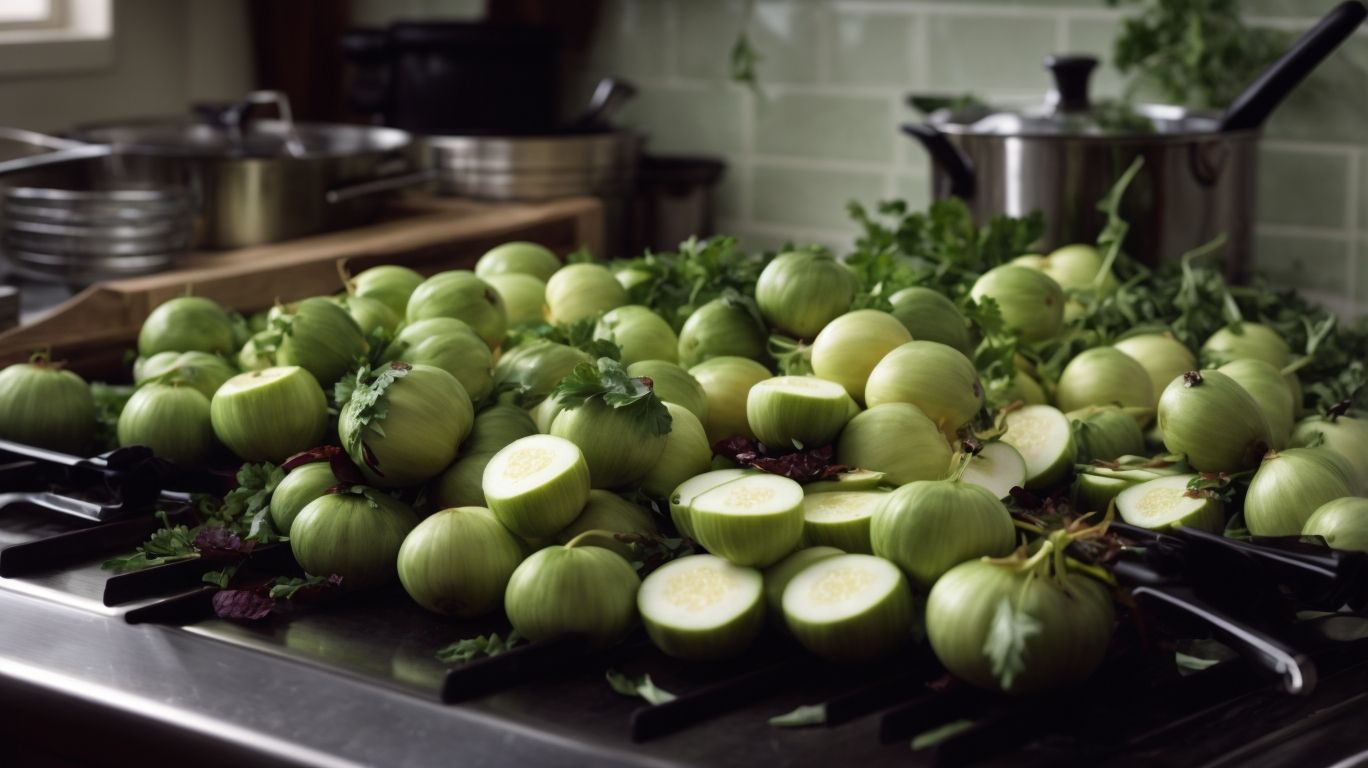
Credits: Poormet.Com – Patrick Wilson
Cooking kohlrabi on the stove offers a multitude of delicious options to savor this versatile vegetable in various culinary creations.
One of the most popular methods to cook kohlrabi on the stove is roasting. Roasting helps enhance its natural sweetness and develop a lovely caramelized exterior.
To roast kohlrabi, start by peeling and cutting it into uniform pieces. Toss the kohlrabi with olive oil, salt, and pepper, then spread it out on a baking sheet. Roast in a preheated oven until tender and golden brown, usually around 25-30 minutes.
This method adds depth of flavor and a satisfying crunch to your kohlrabi dish.
Roasted Kohlrabi
Roasted kohlrabi offers a caramelized and flavorful twist to this vegetable, making it a delightful side dish or addition to salads.
When roasting kohlrabi, the natural sweetness of the vegetable intensifies, while its texture transforms into a tender yet slightly crispy bite. This process not only enhances its earthy undertones but also brings out a nutty flavor that pairs beautifully with various seasonings such as garlic, thyme, and parmesan. The versatility of roasted kohlrabi extends beyond being a standalone side; it can be incorporated into stir-fries, grain bowls, or even used as a topping for pizzas. With its mild, turnip-like taste, roasted kohlrabi is a great way to introduce a unique and nutritious element to your meals.
Sautéed Kohlrabi
Sautéed kohlrabi combines the crispness of the vegetable with savory seasonings, creating a delicious and nutritious dish for any meal.
When preparing sautéed kohlrabi, start by peeling the kohlrabi and cutting it into thin slices or cubes, ensuring even cooking. Heat olive oil or butter in a skillet over medium heat. Add minced garlic and diced onions for a flavorful base.
Once the onions are translucent, add the kohlrabi to the skillet. Season with salt, pepper, and a dash of paprika for added depth of flavor. Sauté the kohlrabi until it becomes tender but still retains a slight crunch, typically taking about 8-10 minutes.
For a finishing touch, sprinkle fresh parsley or grated Parmesan cheese over the sautéed kohlrabi before serving. This dish pairs well with grilled chicken or fish for a complete and satisfying meal.
Steamed Kohlrabi
Steamed kohlrabi preserves its natural flavors and nutrients, offering a simple yet wholesome cooking method for this versatile vegetable.
Steaming kohlrabi provides a method that helps to maintain the vegetable’s vibrant color, crunchy texture, and vital nutrients, which would otherwise be lost through other cooking techniques. By locking in essential vitamins and minerals like Vitamin C and potassium, steamed kohlrabi becomes an excellent addition to a healthy diet.
The simplicity of steaming kohlrabi is truly a game-changer for those seeking convenient yet nutritious meal options. With minimal preparation involved, this cooking method suits busy lifestyles while ensuring a delicious outcome.
Grilled Kohlrabi
Grilled kohlrabi imparts a smoky char and enhances its natural sweetness, making it a delectable option for barbecues and outdoor gatherings.
Giving kohlrabi a turn on the grill brings out its unique flavors and textures in a delightful way. To begin, start by preheating the grill to medium heat. Peel the kohlrabi and slice it into rounds or wedges, depending on your preference. Drizzle with olive oil, sprinkle with salt and pepper, and any desired herbs or spices for added depth of flavor.
Place the seasoned kohlrabi on the grill and cook for about 10-15 minutes, turning occasionally until it’s tender and slightly charred. The grill caramelizes the natural sugars in the kohlrabi, creating a harmonious blend of sweetness and smokiness.
Once grilled to perfection, serve the kohlrabi as a side dish, garnished with fresh herbs or a squeeze of lemon juice to brighten the flavors. It pairs wonderfully with grilled meats or as a standalone vegetarian option that will surely impress your guests.
Stir-Fried Kohlrabi
Stir-fried kohlrabi offers a quick and flavorful way to enjoy this vegetable, combining it with aromatic spices and complementary ingredients.
Stir-frying involves cooking ingredients quickly over high heat in a wok, which helps to retain the crispness of kohlrabi while infusing it with the rich flavors of garlic, ginger, and soy sauce. The key to a successful stir-fry is to have all your ingredients prepped and ready to go before you start cooking, as the process is fast-paced. For a boost of protein, you can add tofu, chicken, or shrimp to the stir-fry. Once cooked, serve the stir-fried kohlrabi hot over steamed rice or noodles for a satisfying and delicious meal.
What Are Some Delicious Kohlrabi Recipes?
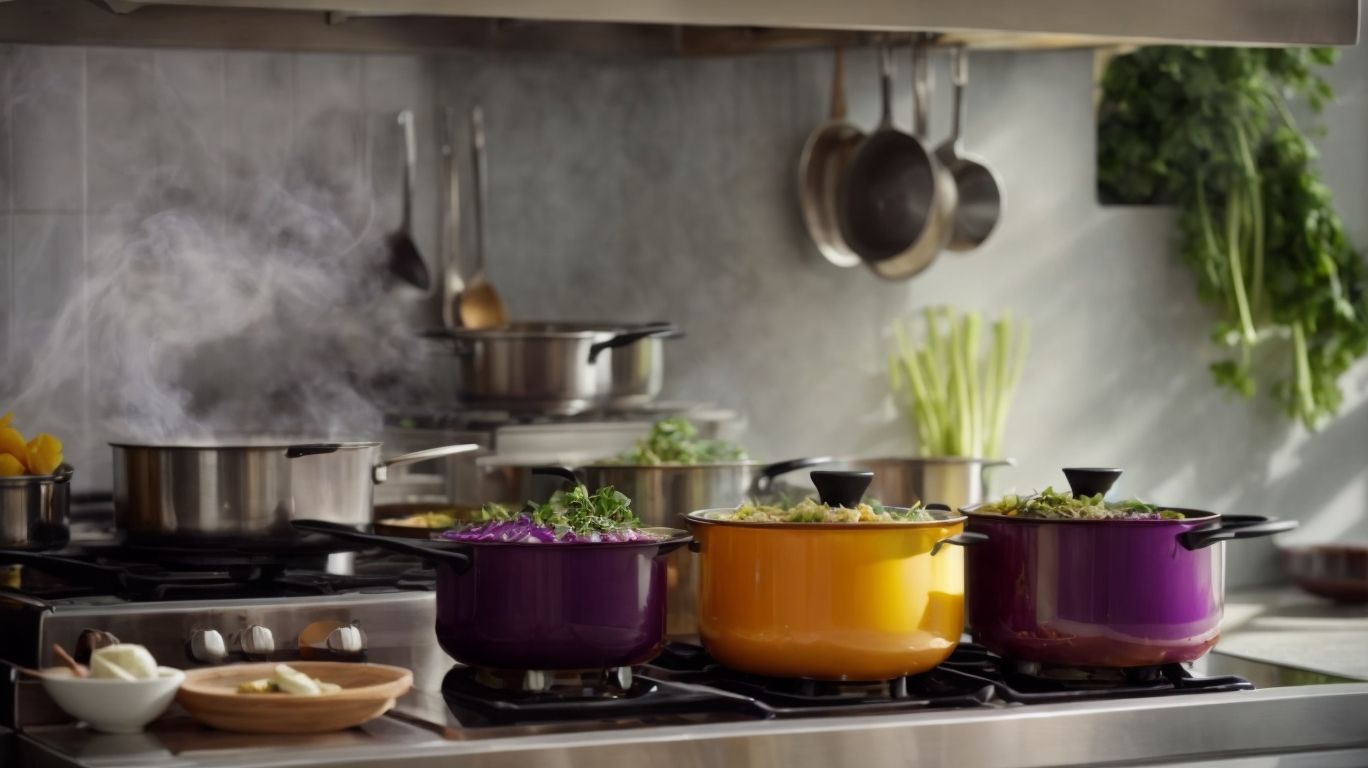
Credits: Poormet.Com – Randy Thomas
Explore a variety of mouthwatering kohlrabi recipes that showcase its versatility and culinary appeal.
From crispy kohlrabi fritters to creamy mashed kohlrabi, there are endless ways to enjoy this underrated vegetable. Dive into a refreshing kohlrabi slaw perfect for summer picnics or warm up with a comforting kohlrabi soup on a chilly evening. If you’re looking for a light yet satisfying meal, try a zesty kohlrabi salad with a tangy dressing. Each dish offers a unique way to savor the mild, slightly sweet flavor of kohlrabi, making it a standout ingredient in any kitchen.
Kohlrabi Fritters
Kohlrabi fritters offer a crispy and flavorful snack or side dish, combining the mild sweetness of the vegetable with a crunchy texture.
To create these delectable fritters, start by peeling and grating the kohlrabi into a mixing bowl. Add in some chopped onions, minced garlic, a sprinkle of spices such as cumin and paprika, and a touch of flour to bind the mixture together. Form the batter into small patties and gently fry them in hot oil until golden brown and crispy. Serve the kohlrabi fritters hot with a dollop of tangy yogurt sauce or a zesty aioli for a delightful flavor contrast. These fritters make a perfect appetizer for gatherings or a flavorful addition to any meal.
Kohlrabi and Potato Mash
Kohlrabi and potato mash create a creamy and comforting side dish with a delightful blend of flavors and textures.
To make this delectable dish, start by peeling and cubing equal parts of kohlrabi and potatoes. Boil them in a pot of salted water until they are fork-tender. Then, drain the vegetables and return them to the pot. Add a knob of butter, a splash of milk, and a pinch of salt and pepper. Mash everything together until smooth and creamy.
This mash can be customized with additional ingredients such as garlic, herbs, or cheese. Consider adding a sprinkle of nutmeg for an extra layer of warmth and flavor. Serve this kohlrabi and potato delight alongside roasted meats or grilled vegetables for a satisfying meal.
Kohlrabi Slaw
Kohlrabi slaw offers a fresh and crunchy salad option, combining the vegetable’s crispness with zesty dressings for a refreshing burst of flavors.
When assembling your kohlrabi slaw, start by peeling the tough skin of the kohlrabi and then julienning or shredding it finely. You can add other colorful ingredients like shredded carrots, thinly sliced red cabbage, or even some chopped apples to enhance both the taste and visual appeal of your slaw. For the dressing, you have a variety of options ranging from a classic vinaigrette to a creamy mayo-based dressing or a tangy citrus-infused dressing to complement the kohlrabi’s mild flavor.
Kohlrabi and Carrot Soup
Kohlrabi and carrot soup offer a hearty and nutritious option, blending the earthy sweetness of kohlrabi with the vibrant flavors of carrots in a comforting bowl.
For this delightful soup, start by sautéing onions and garlic in a pot until they are translucent. Add diced kohlrabi and carrots, and let them cook until slightly softened. Then pour in vegetable broth and bring the mixture to a gentle simmer. Season with salt, pepper, and a touch of nutmeg for that extra depth of flavor.
Once the veggies are tender, use an immersion blender to puree the soup until smooth. The kohlrabi adds a creamy texture, while the carrots provide a beautiful color. To enhance the overall taste, consider adding a splash of coconut milk for a subtle hint of sweetness.
Kohlrabi and Apple Salad
Kohlrabi and apple salad create a harmonious blend of flavors and textures, combining the sweetness of apples with the crispness of kohlrabi for a refreshing salad option.
When assembling this delightful salad, start by peeling the tough outer layer of the kohlrabi and shredding it into thin strips or using a mandoline for a more precise cut. Next, core and slice the apples into matchsticks to complement the kohlrabi’s texture. Mixing both in a bowl creates a colorful and vibrant base for the salad.
For the dressing, consider drizzling a tangy vinaigrette made with apple cider vinegar, olive oil, and a touch of honey to enhance the flavors without overpowering the natural sweetness of the fruits.
Frequently Asked Questions
What is the best way to cook Kohlrabi on a stove?
There are a few different ways to cook Kohlrabi on a stove, but the best method is to sauté it in a pan with some oil and your choice of seasonings.
Can I boil Kohlrabi on a stove?
Yes, you can boil Kohlrabi on a stove, but it may result in a mushier texture. It is recommended to use other cooking methods, such as sautéing or roasting, for a firmer texture and better flavor.
How long does it take to cook Kohlrabi on a stove?
It typically takes around 10-15 minutes to cook Kohlrabi on a stove. This may vary depending on the size and thickness of the Kohlrabi, so it is best to keep an eye on it and test for desired tenderness.
What seasonings go well with Kohlrabi when cooking on a stove?
Popular seasonings to use when cooking Kohlrabi on a stove include garlic, onion, herbs like thyme or rosemary, and spices such as paprika or cumin. You can also experiment with different flavors to find your favorite combination.
Can I cook Kohlrabi on a stove without oil?
Yes, you can cook Kohlrabi on a stove without oil by using a non-stick pan or adding a small amount of water to the pan to prevent sticking. However, using a small amount of oil can help enhance the flavor and texture of the Kohlrabi.
Is there a specific type of pan that is best for cooking Kohlrabi on a stove?
Any type of pan can be used to cook Kohlrabi on a stove, but a non-stick pan is recommended to prevent sticking. You can also use a cast iron skillet for a nice char and added flavor.

